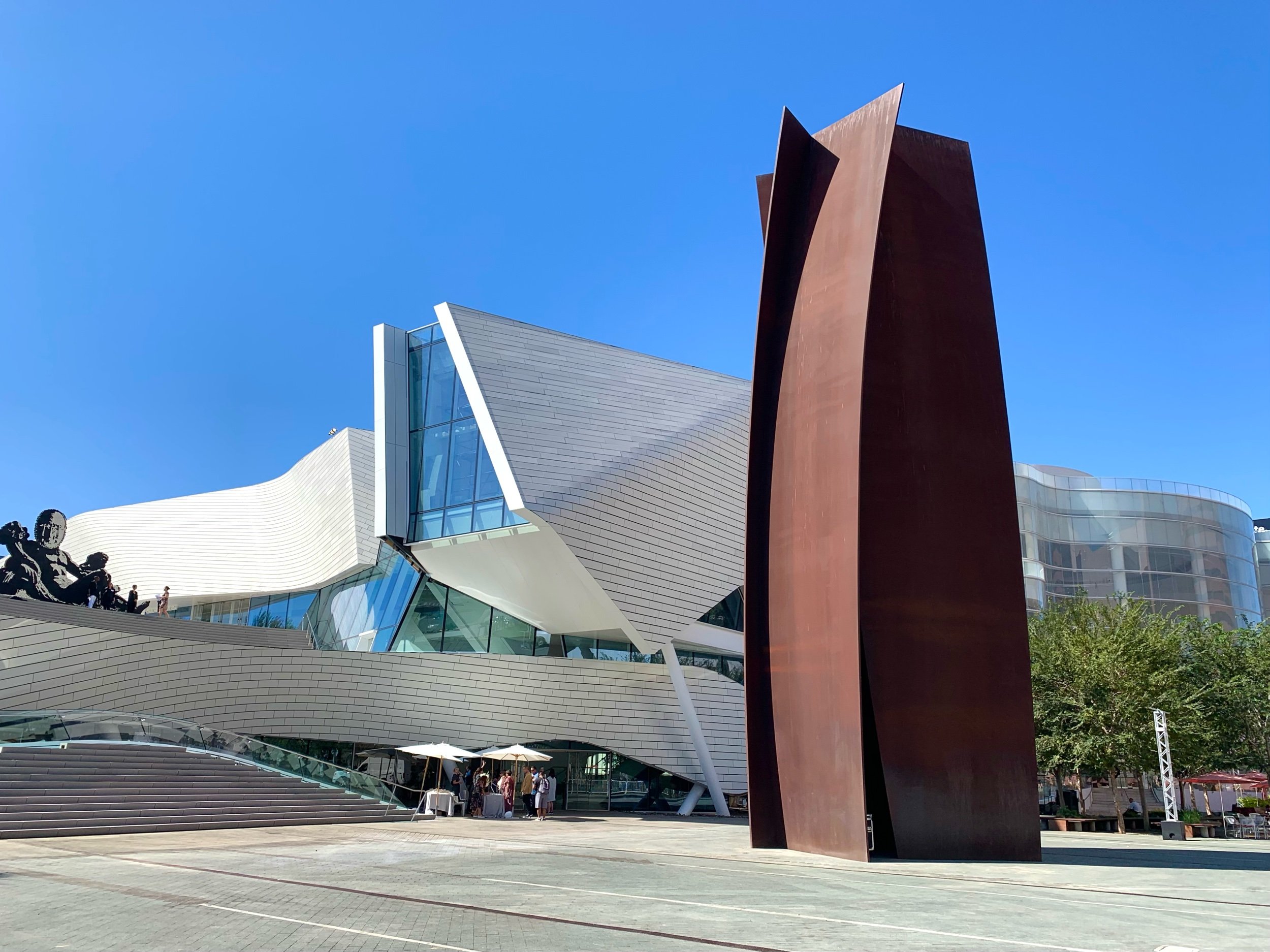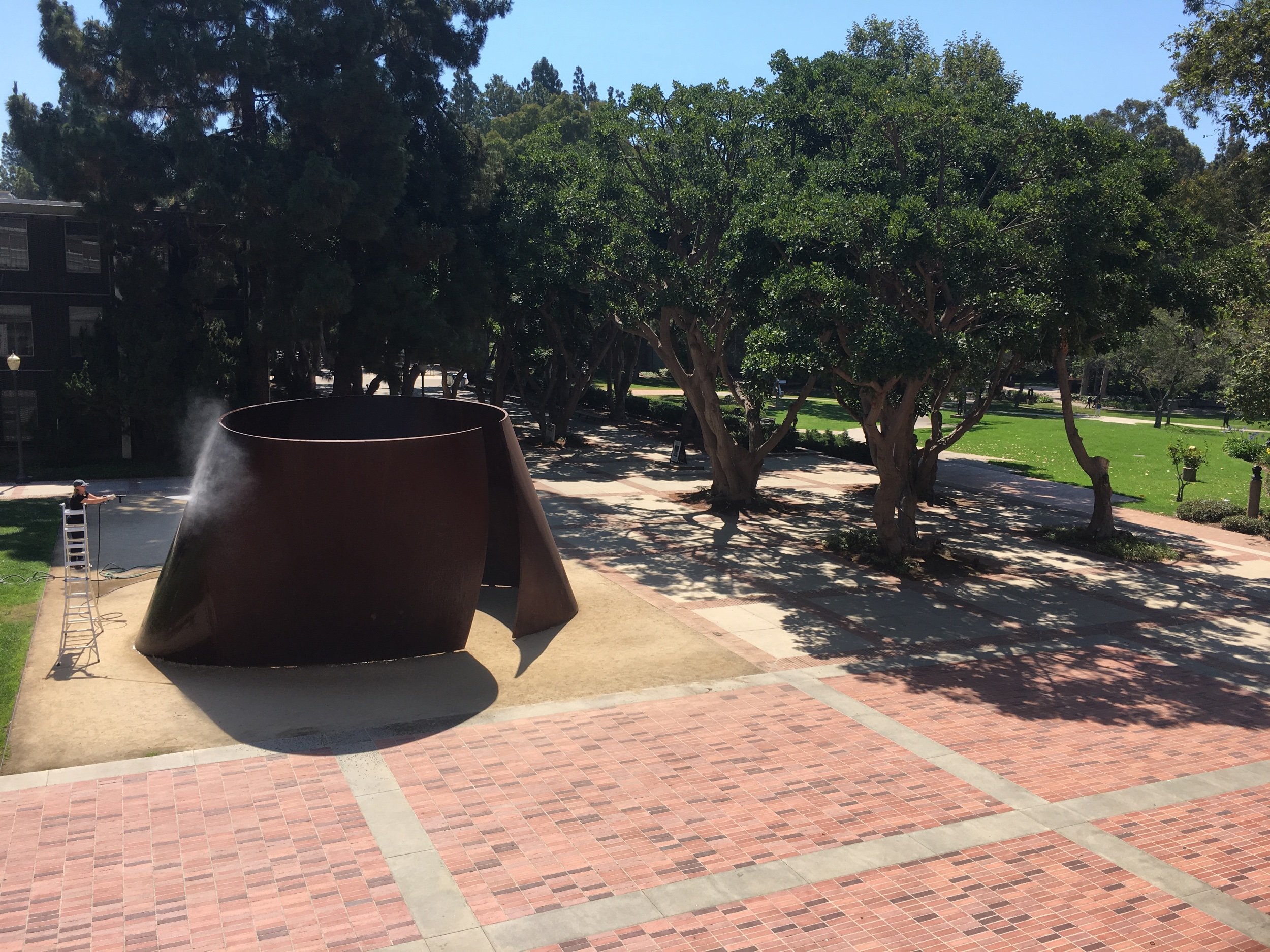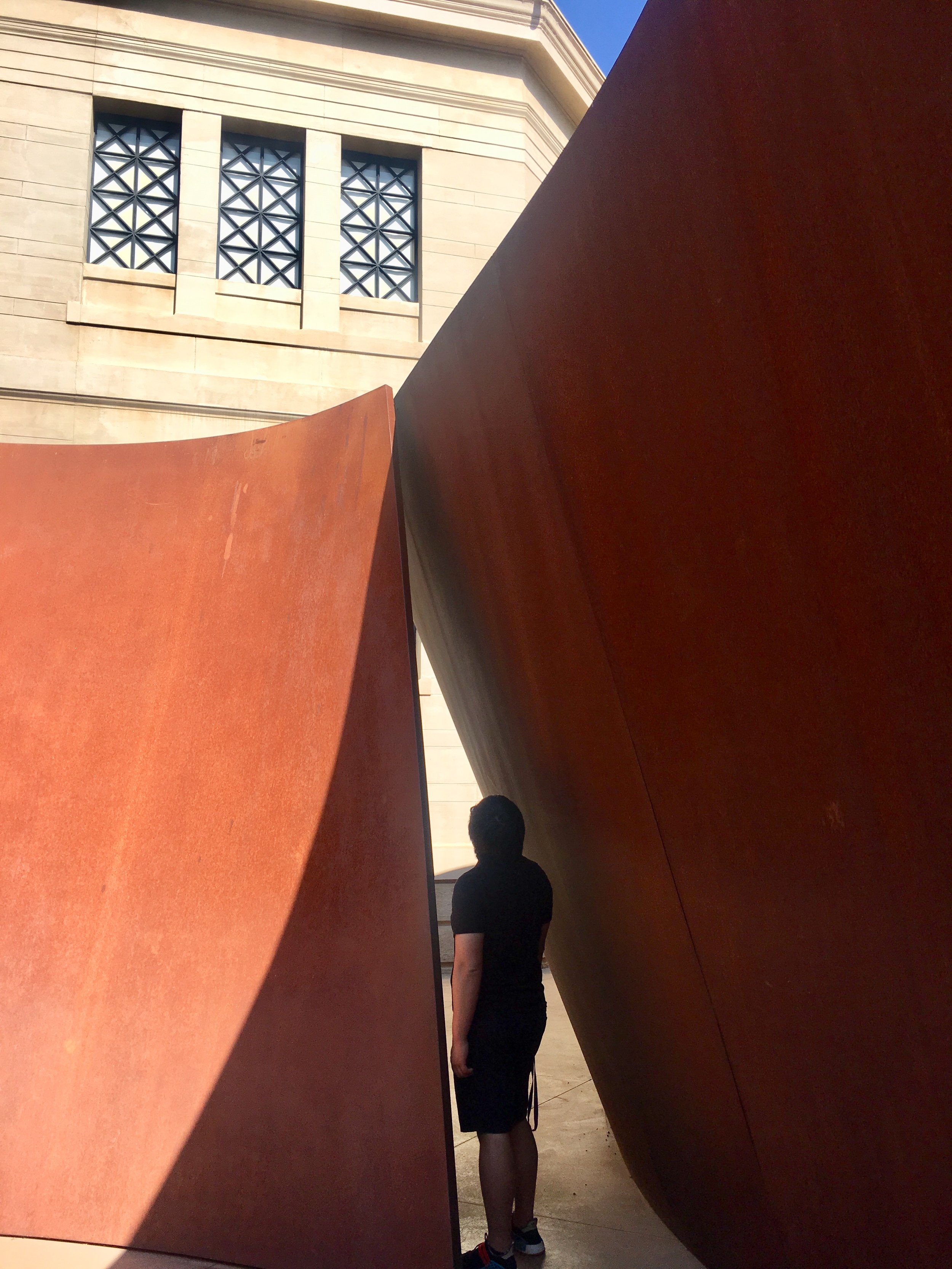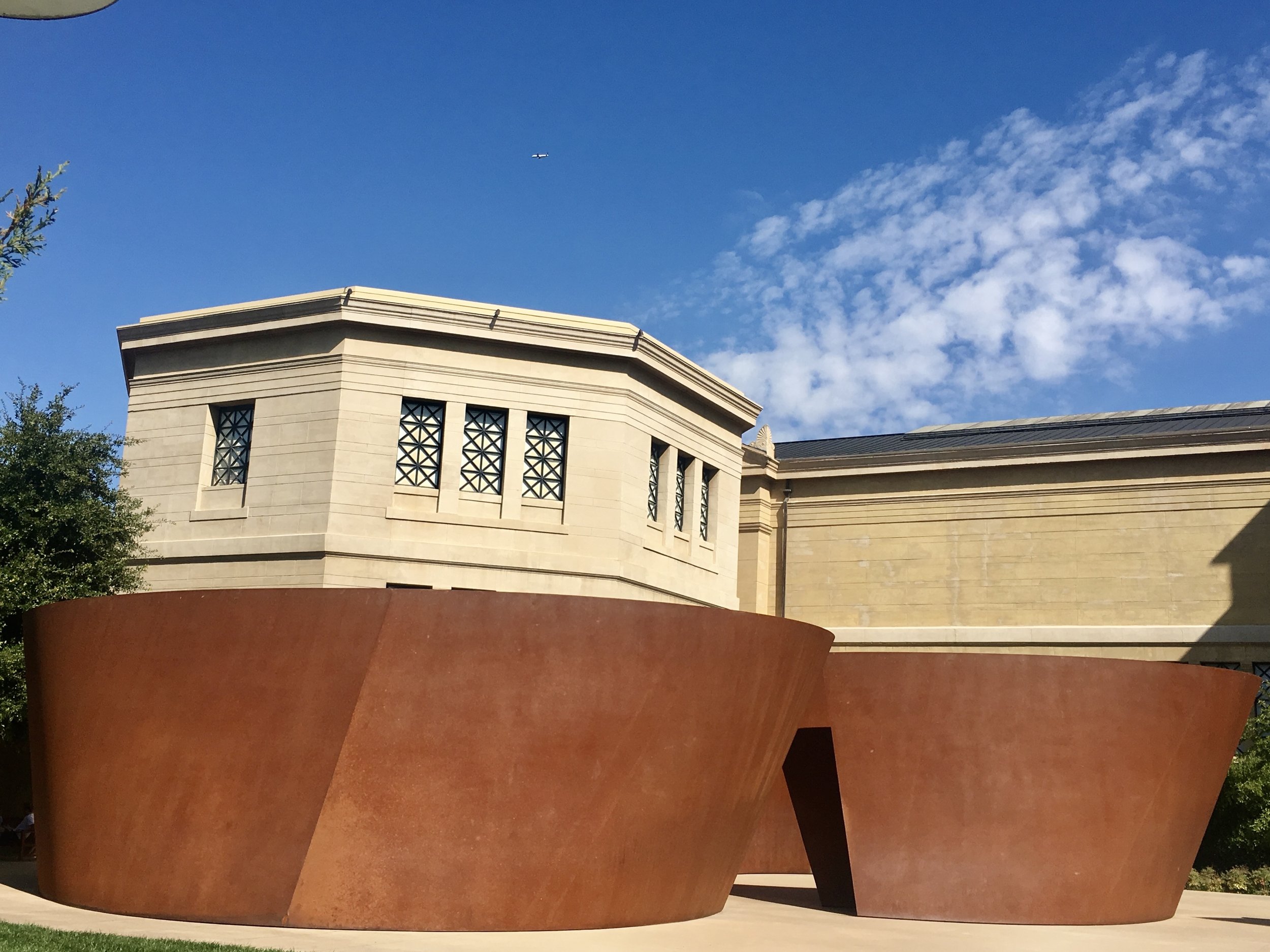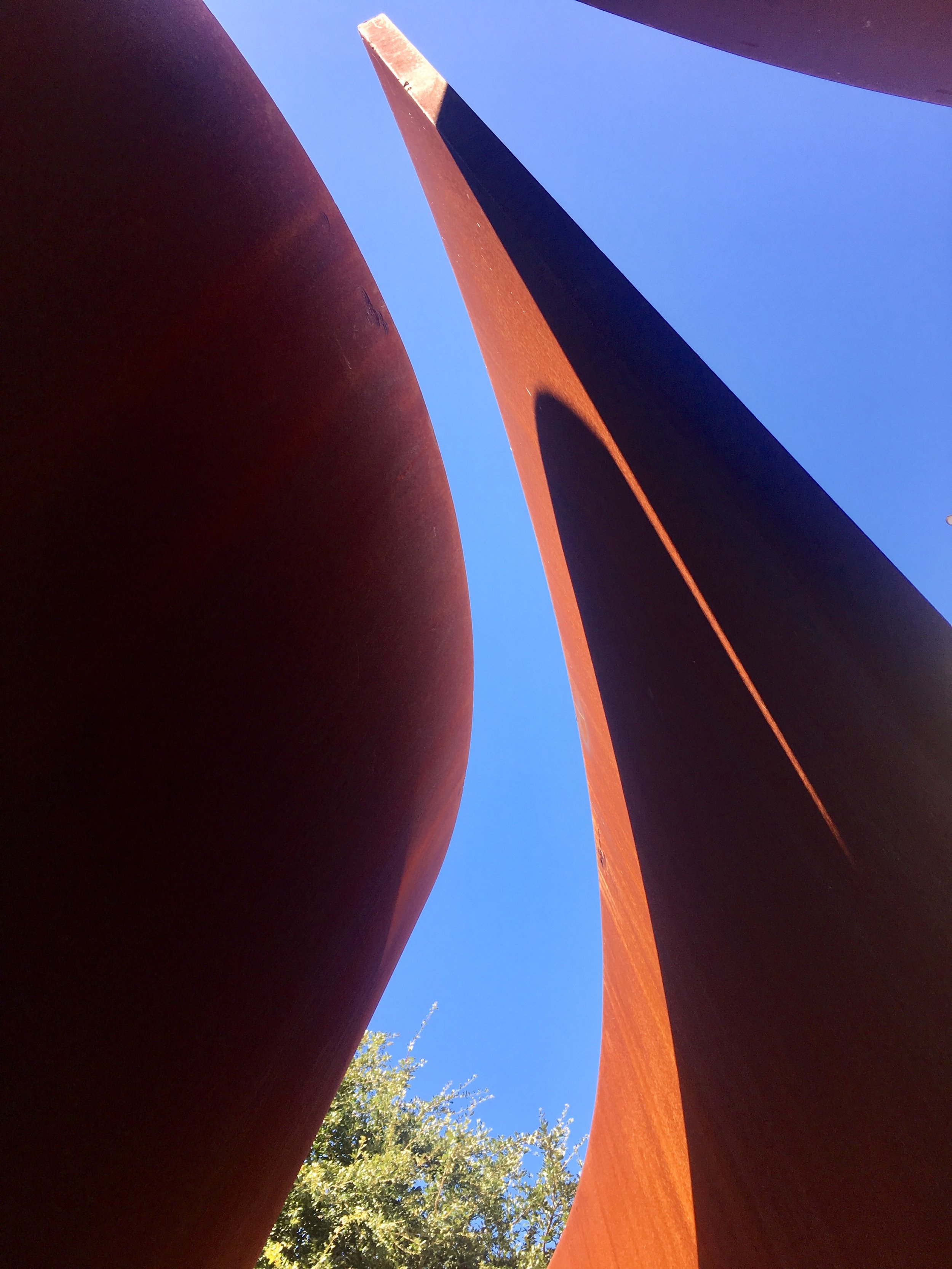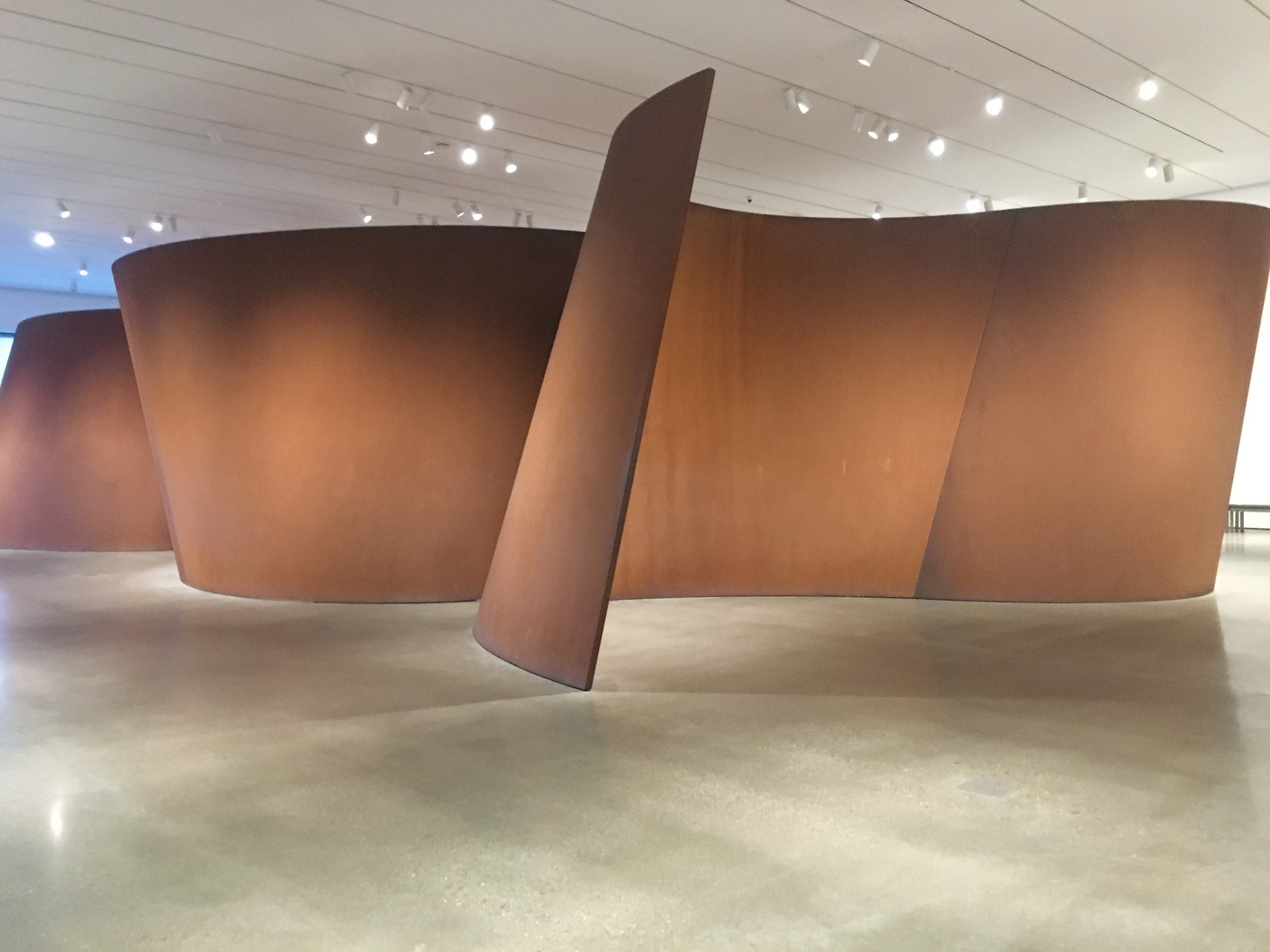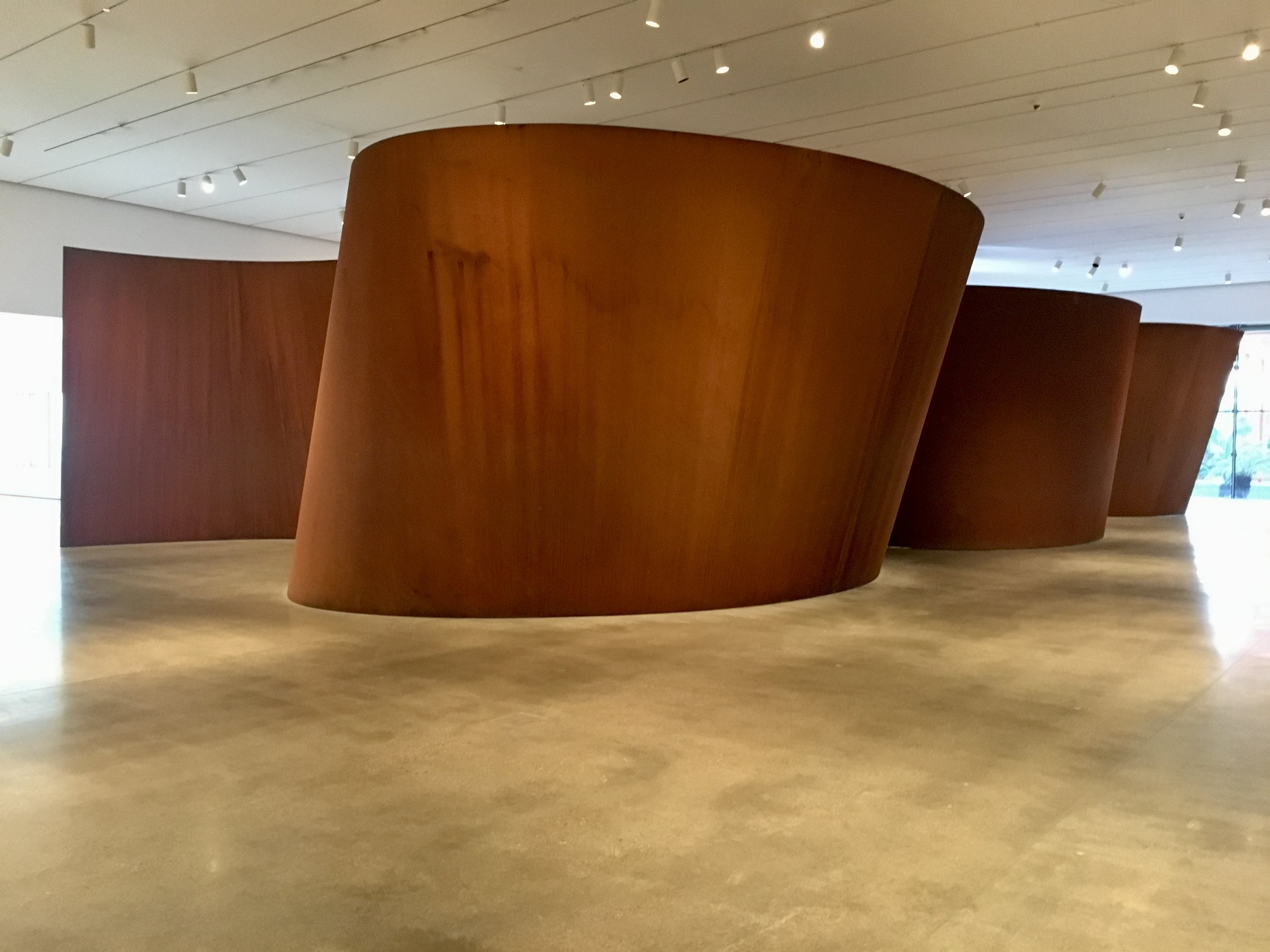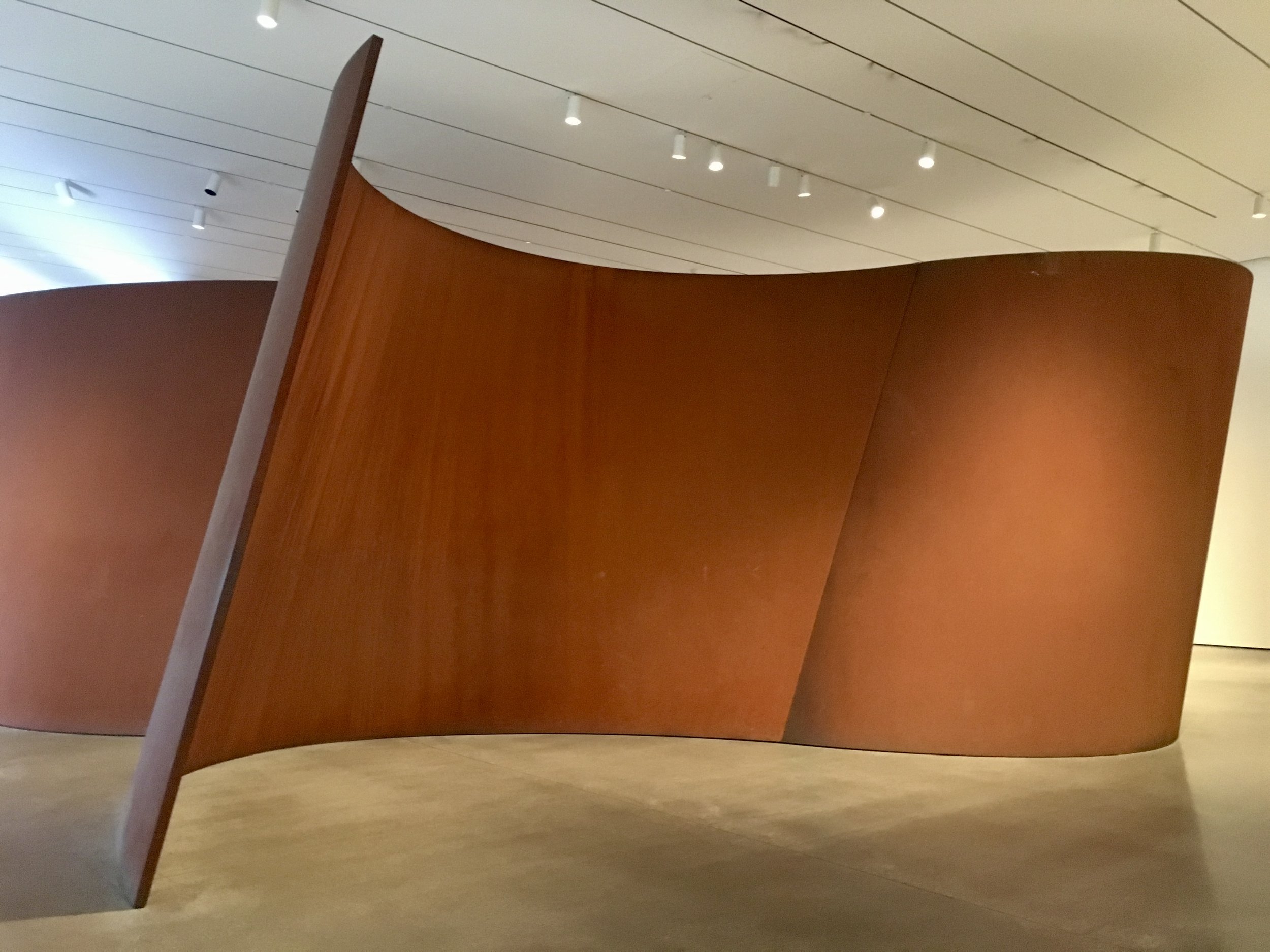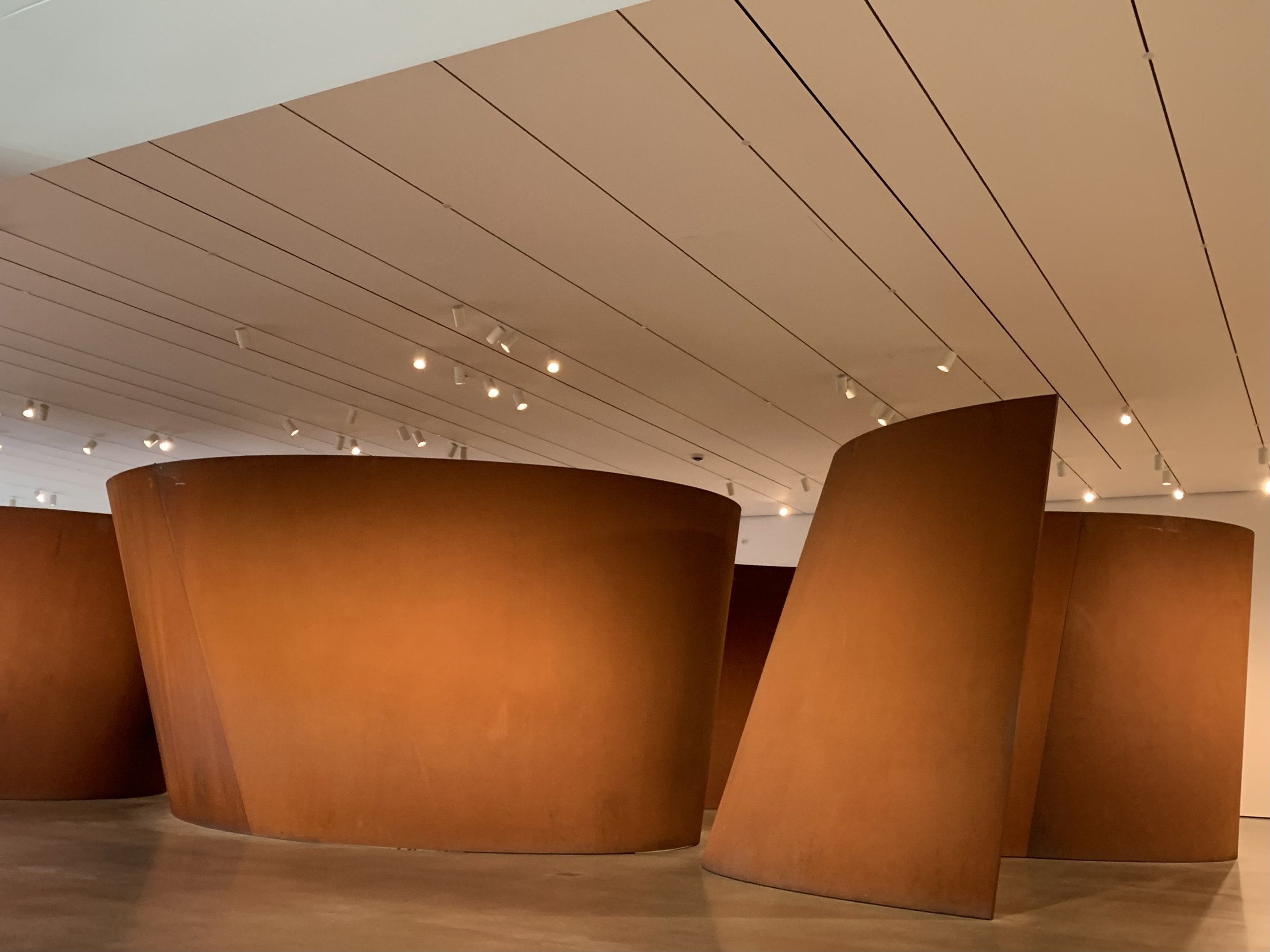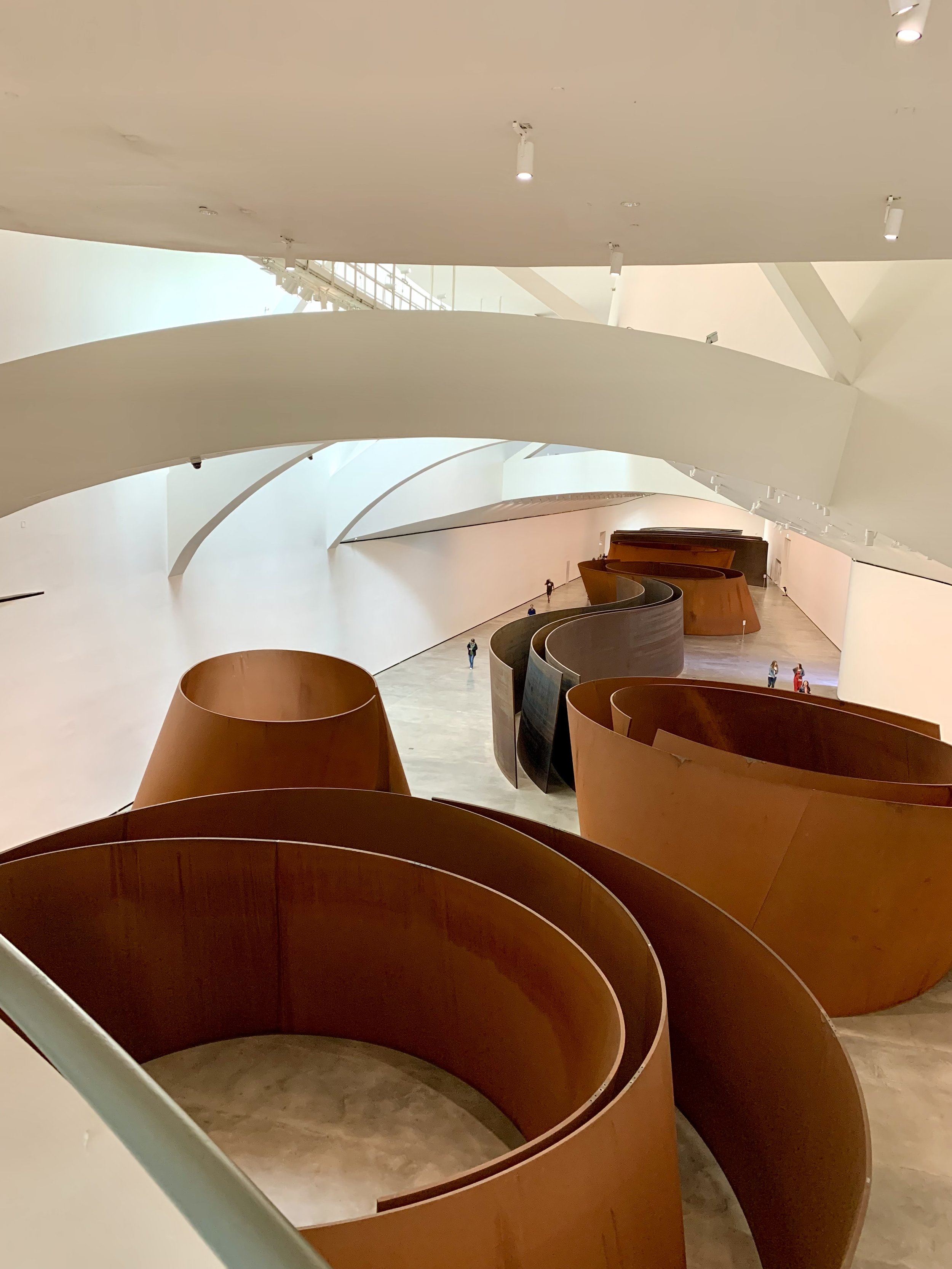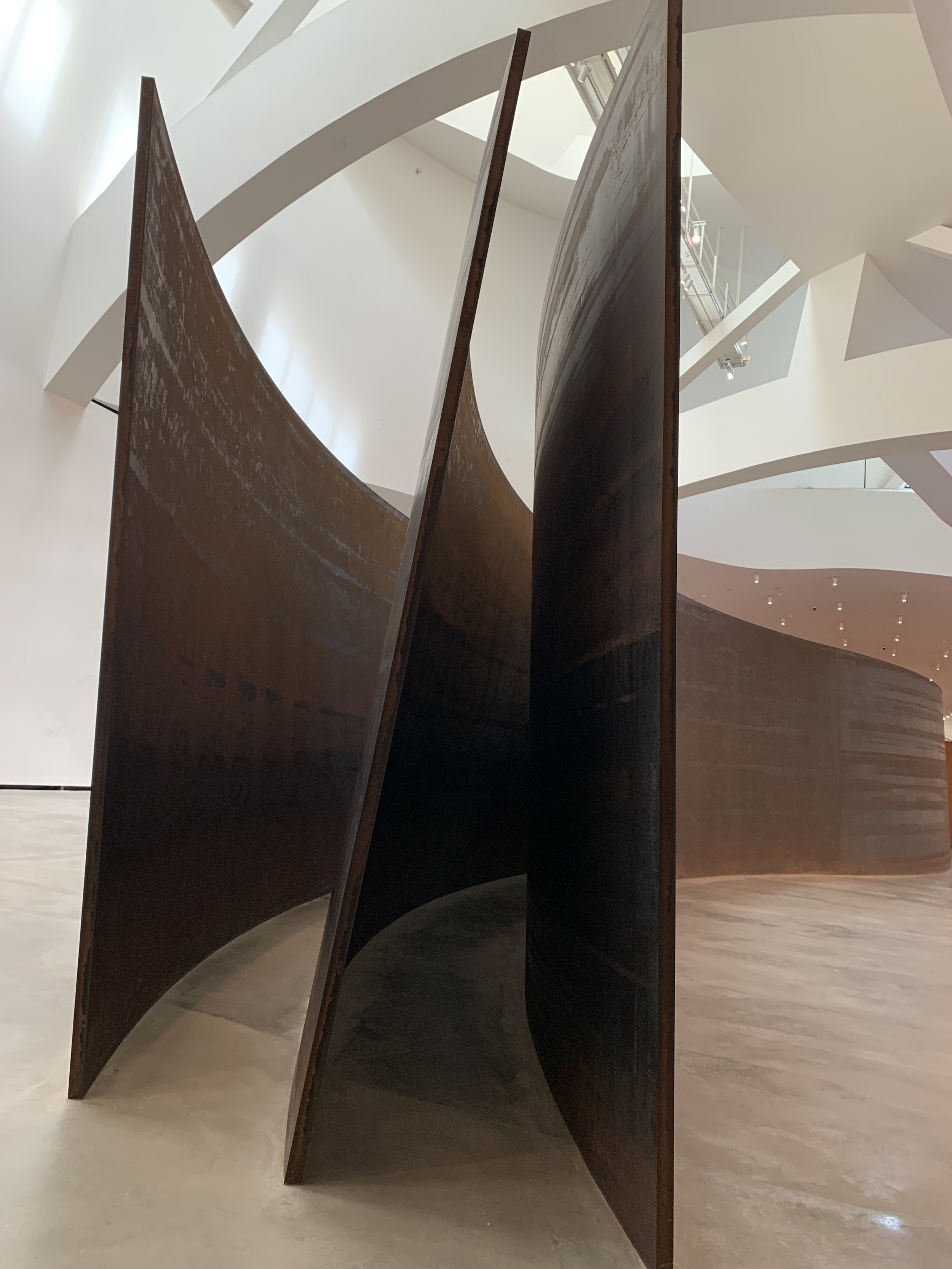Artist Corner - Richard Serra
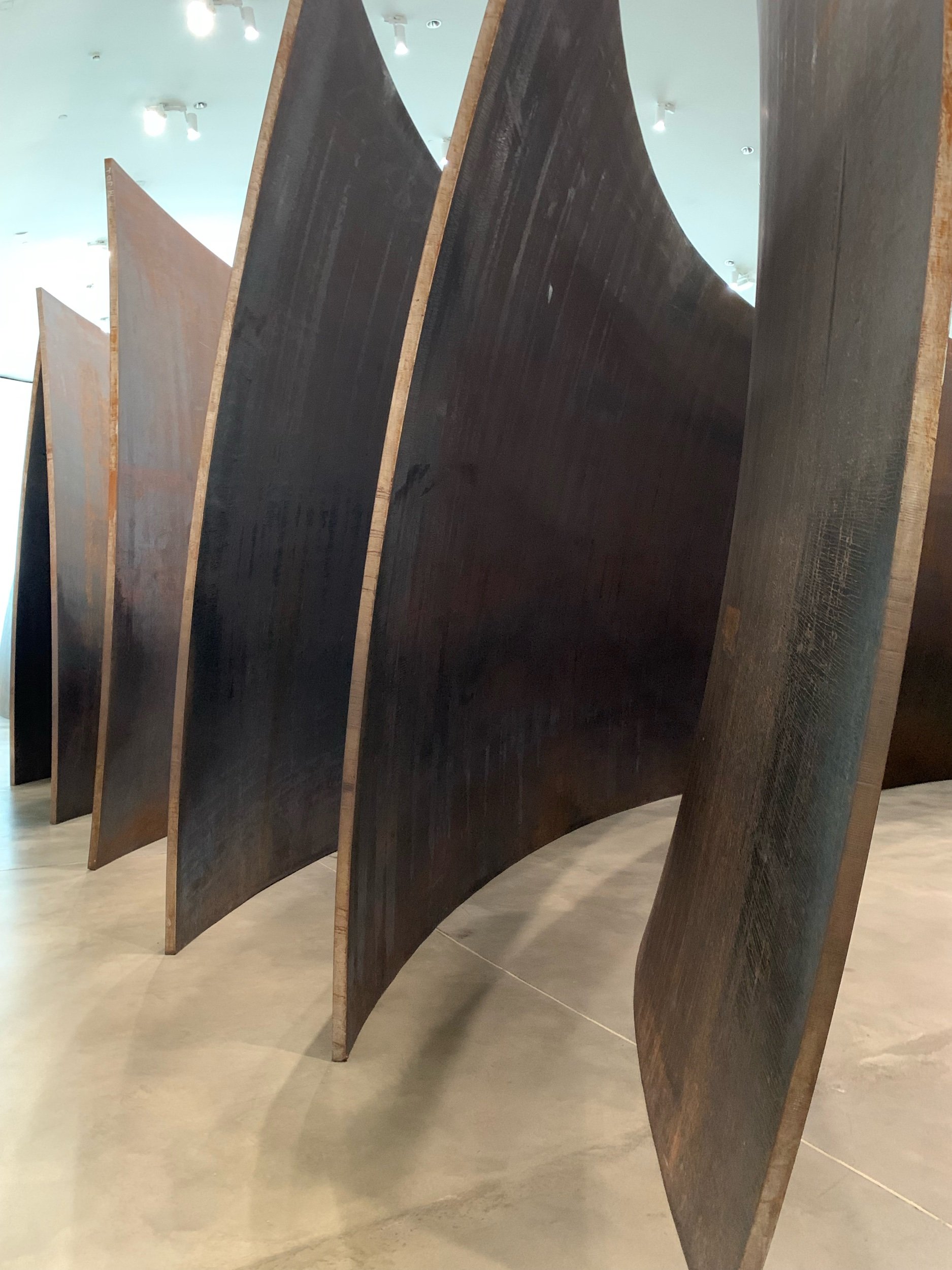
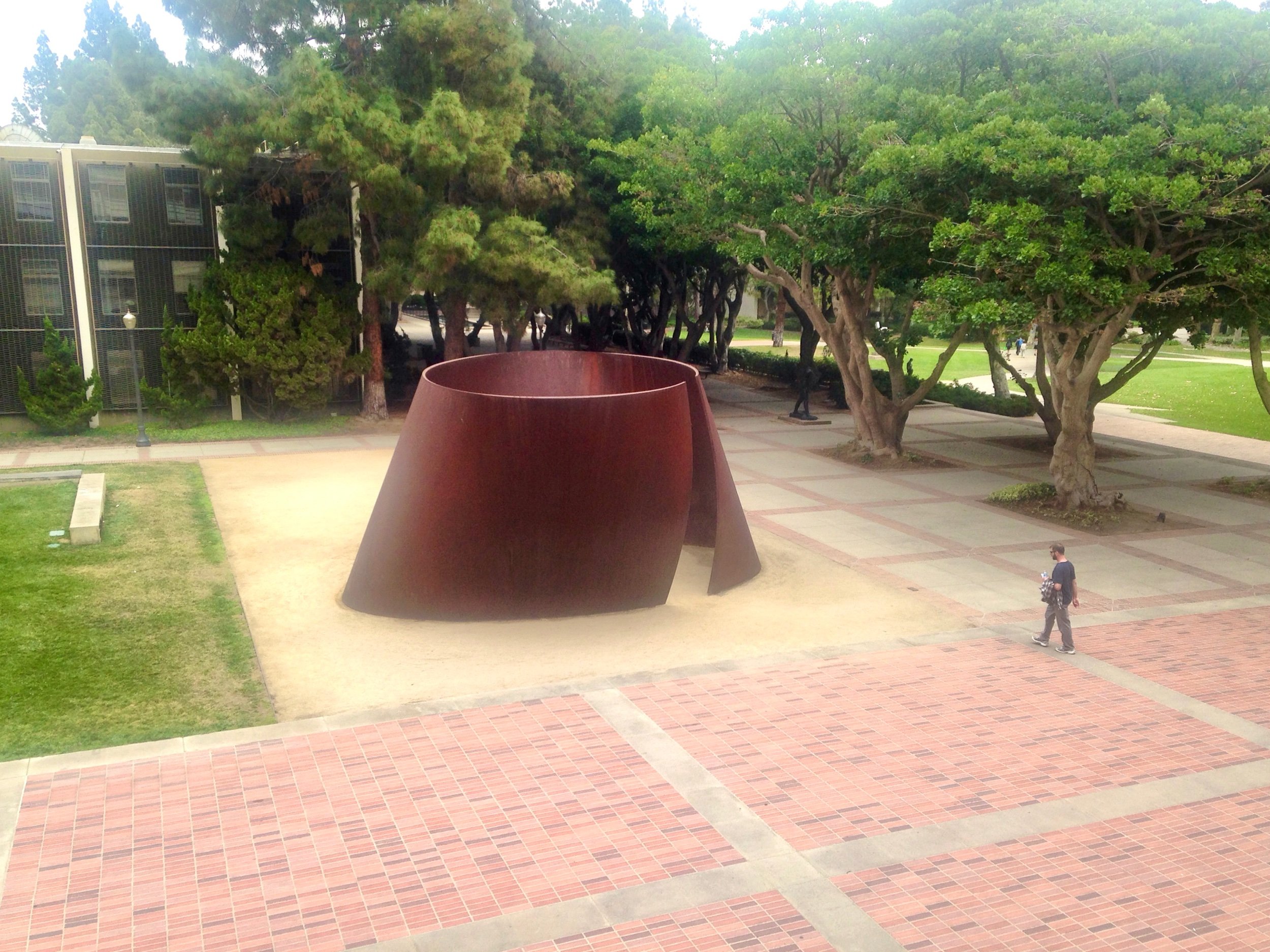
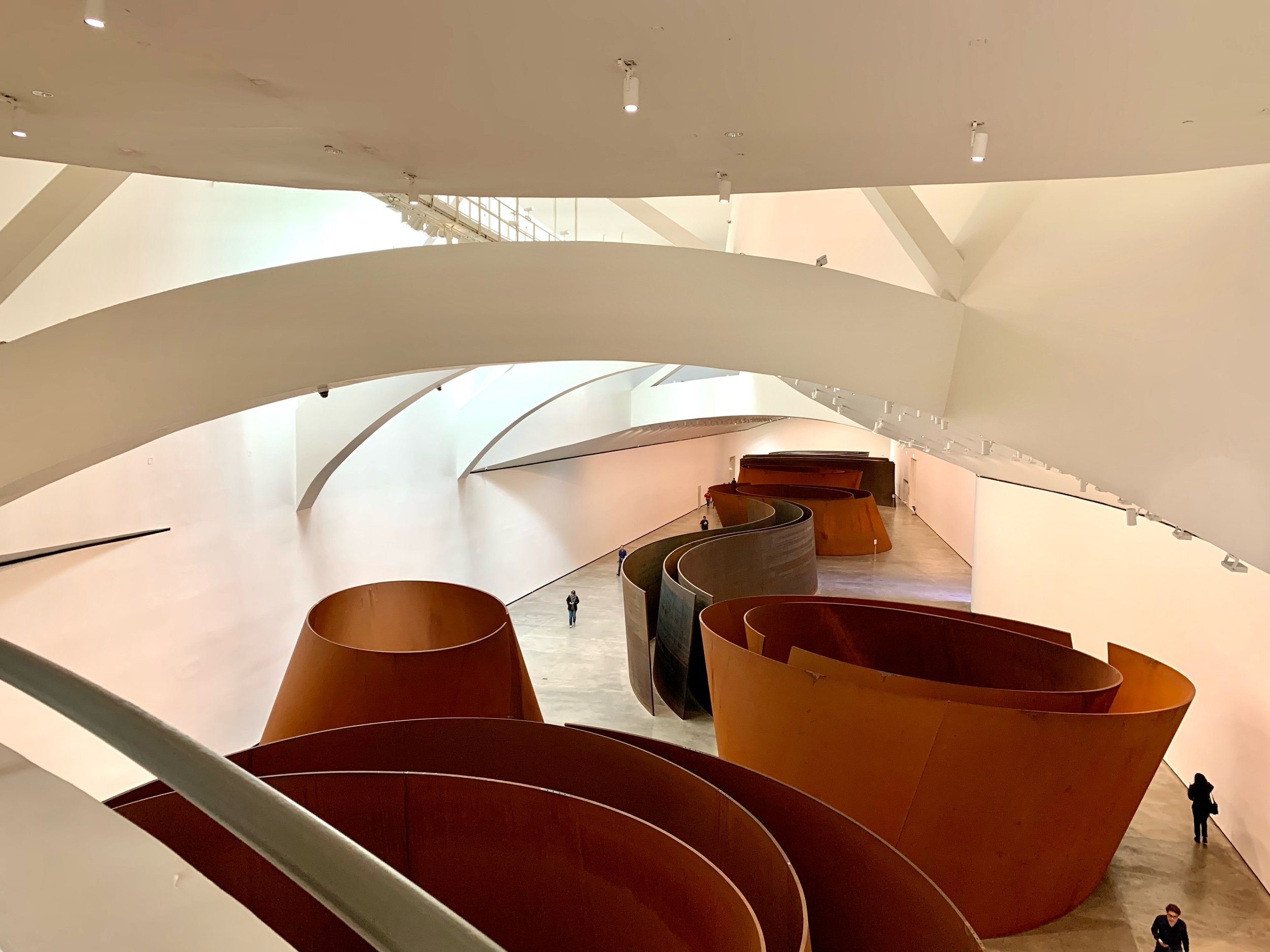

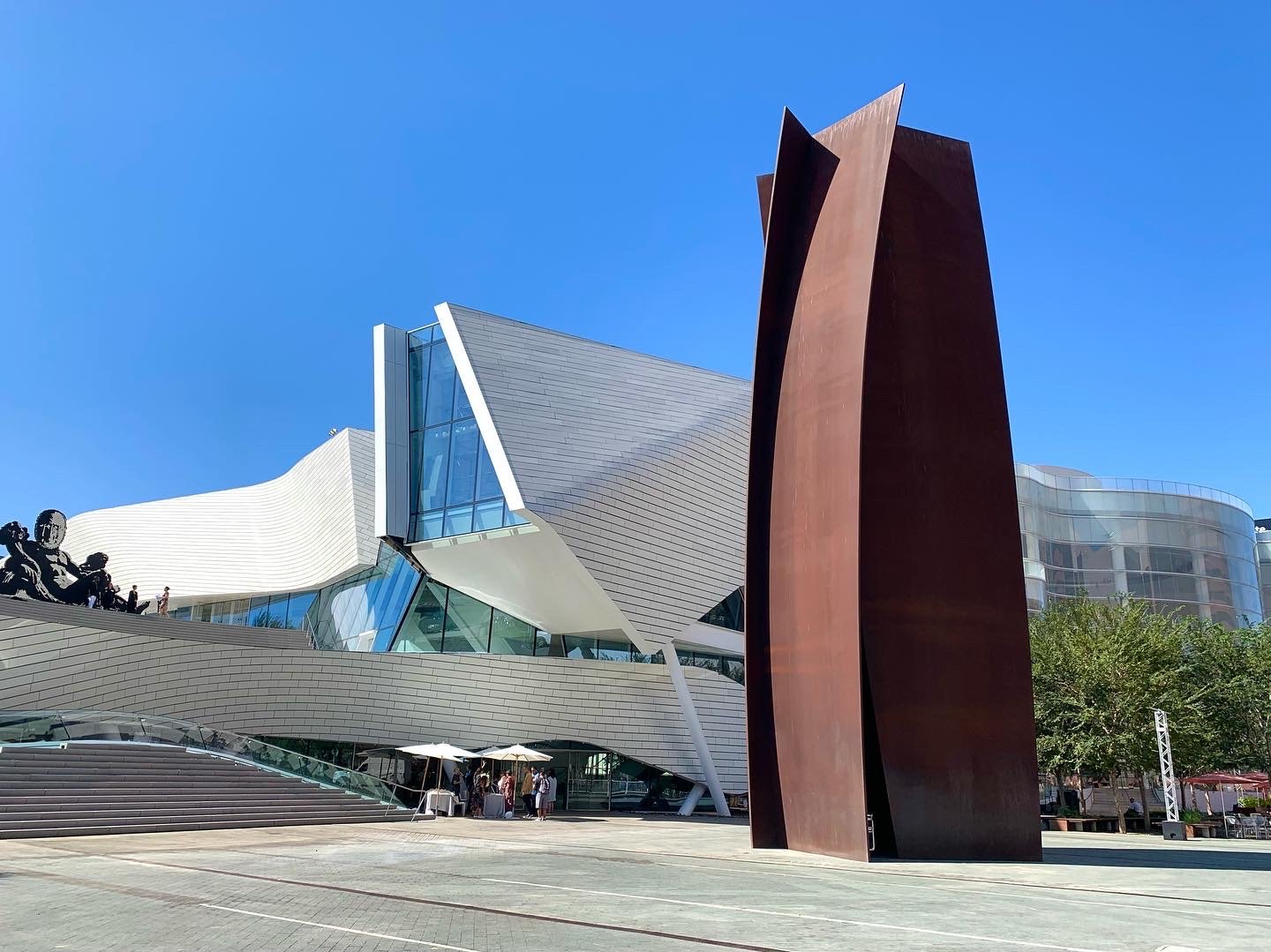
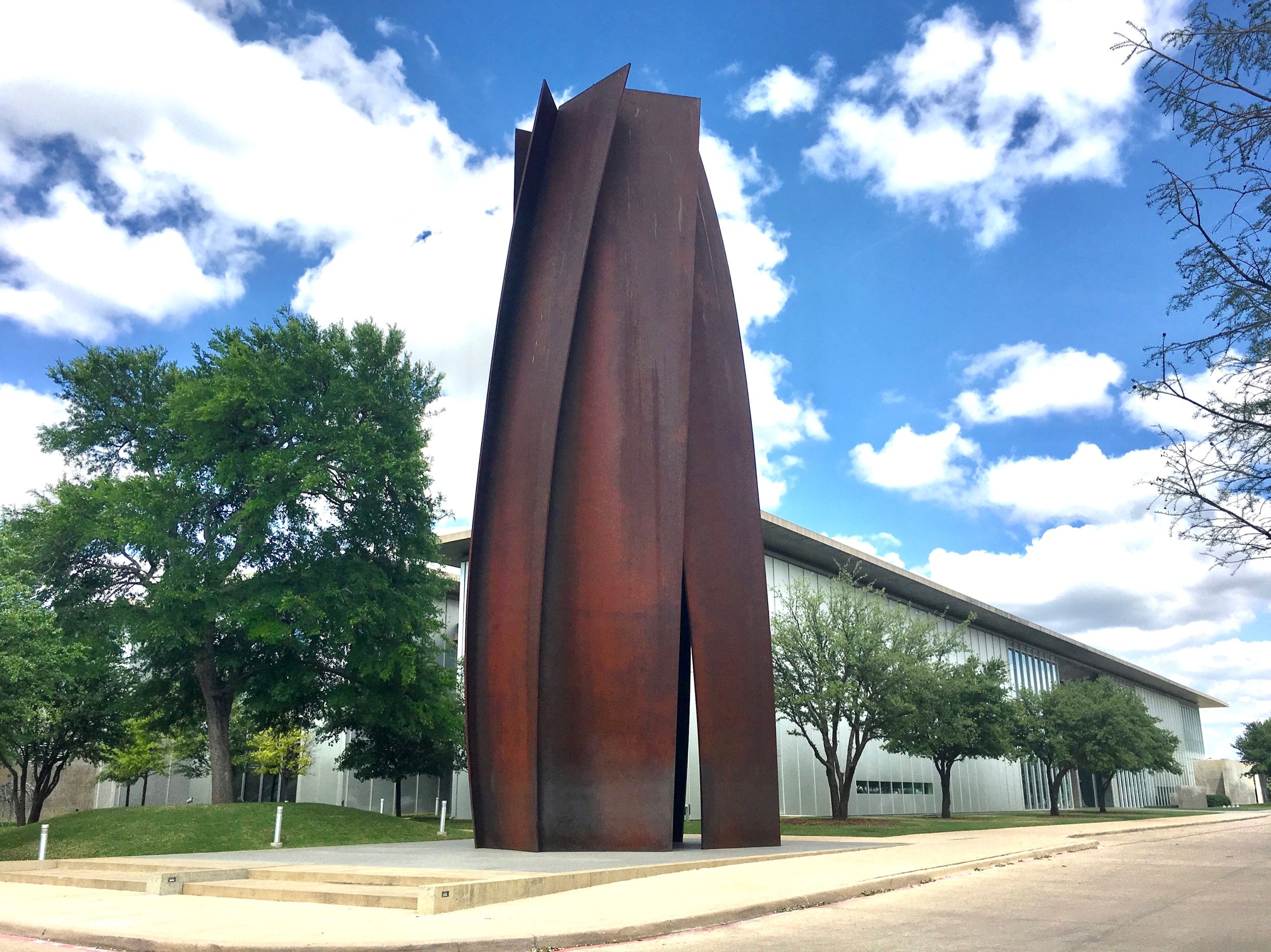
Richard Serra’s large scale works, many site-specific, resonate with many as they invite the viewer to experience by movement through the works.
Here are some that I have appreciated, the ones closer to home, more than once.
Connector, 2006 Segerstrom Center for the Arts, Costa Mesa
At 65 feet high, the 360-ton steel artwork is set on a pentagonal ground plan. Constructed of five torqued weatherproof steel plates that were fabricated in Siegen, Germany, the sculpture was assembled on site, rising from a twenty-foot position at its base to a four-foot opening at its top. The sculpture is sited on the main axis of the plaza, and visitors are encouraged to walk around it and through it. Inside, the aperture at the top opens to the sky.
T.E.U.C.L.A,2006 The Franklin D. Murphy Sculpture Garden
Designed by Richard Meier, the Broad Art Center is also home to a site-specific Richard Serra sculpture commissioned by Eli Broad. T.E.U.C.L.A., a 42.5-ton piece is the artist’s first to be on permanent public view in Southern California.
I happened to catch a power washing of the sculpture in the second image above.
Sequence,2006 Cantor Art’s Center, Stanford University
Owned by the Donald and Doris Fisher family, this sculpture comprises twelve steel plates and weighs a staggering 235 tons.
Initially on loan to the Cantor from 2011 to 2015, Sequence returned to the Cantor’s North Lawn from SFMOMA in February 2019, where it is now on long-term view. Visitors are able to appreciate this work in its unique outdoor setting on Stanford’s campus.
I’ve viewed Sequence in both locations, coincidentally each time with my son.
Band,2006 LACMA
Among the most formally elegant and technically complex works of Serra's oeuvre, this sculpture took him two-and-a-half years to develop. At 12 feet high and more than 70 feet long, the work is vast even by Serra's monumental standard.
Vortex,2002 Modern Art Museum, FortWorth
An abstract version of an Italian campanelle, or bell tower, Vortex, at nearly 68-foot-tall also acts as an instrument, projecting sound waves from those standing within its opening.
Matter of Time,1994–2005 Guggenheim Bilbao
From the museum website:
The Matter of Time allows the viewer to perceive the evolution of the artist’s sculptural forms, from the relative simplicity of a double ellipse to the complexity of a spiral. The last two pieces of this sculpture are created from sections of toruses and spheres that produce different effects on the movement and perception of the viewer. These are unexpectedly transformed as the visitor walks through and around them, creating an unforgettable, dizzying feeling of space in motion. The entire room is part of the sculptural field.


